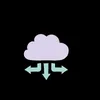Grid computing 101: Boost your startup beyond boundaries
Learn how distributed computing can transform your business, cut costs, and boost productivity.
Remote working has always been there; but in the aftermath of the pandemic, it has largely supplanted the traditional in-office work. Since employees are working from different corners of the world, having a connected yet distributed architecture is of utmost importance to accomplish a collaborative task.
So, how to create an organisation of distributed computing in a heterogeneous environment? Grid computing is your solution.
The newest development in distributed computing, the computational grid, is a computing infrastructure connecting computers from different locations to perform similar activities. As long as these computers are connected to a network, they can be located in different buildings or even other countries (locally or over the cloud).
Because of its 24/7 functionality, computational grids are currently being used by several big businesses, including Pratt & Whitney and Boeing, to enhance their daily operations.
Wondering how your startup business can leverage grid computing? Read on to know more!
The fundamentals of grid computing
With a capacity to surpass the World Wide Web, grid computing provides strong virtualisation by building a single virtual supercomputer that gives users and apps easy access to IT capabilities.
In this setting, all computers have communication capabilities with the control computer, but not with the other connected computers.
Academics in the early 1990s who were looking for ways to distribute computing resources among several organisations laid the foundation for grid computing. In recent times, grid computing has been widely used in many industries, including banking, oil exploration, engineering, and biology, as a result of the evolution of technology.
There are three kinds of grid computing:
- Computation networks
- Scavenging networks
- Grid network for data storage
Components of a computational grid
Nodes
The nodes that make up a grid computing network are interconnected servers or computers. Each node has unique (and shared) resources like RAM and a GPU (graphics processing unit). Control, provider, and user nodes are the three different categories of nodes.
Grid middleware
In the grid network, computing resources are connected and managed by grid middleware. The programme responds to requests from user nodes, manages system resources, and offers security by avoiding resource and result abuse.
Ways to leverage grid computing in startup business

Alongside being beneficial to other industries, grid computing can help a business grow in several ways. Without further ado, let’s explore them.
As grid computing becomes more widely used for corporate purposes, increased productivity and lower operating expenses will spur economic growth and business expansion, helping industries in a variety of industries.
The idea is that grid computing will allow consumers to easily connect to the network and utilise resources like 24/7 accessible mass storage systems (MSS) and powerful processing power.
CPU capacity
Delving into the massive CPU capacity, several aspects are to be noted.
In addition to under-utilised CPU cycles, many systems fail to get the best out of their storage capacity. Consequently, the establishment of a grid allows the usage of each node's spare storage space in a similar way to how idle CPU cycles are utilised.
The name "data grid" originated as a result of this usage of grid technologies to share storage space. Using the free space on all the workstations connected to a cluster grid is all that is required to create a data grid. Instead, data grids may also include MSSs that are connected to the grid.
Alongside this, data grids allow data replication, which raises data reliability by distributing the data across multiple sites.
Additional uses
Dedicated hardware or specialised services that were previously available exclusively to large, well-funded organisations can now be made available to one and all with the storage and processing resources of a grid.
Grid computing: the contingent of behemoths
Several corporate giants have been using grid computing for a while now. Here are a few examples.
A company that fully draws on the grid is Bowne & Co., a financial publishing company that has been making strides for centuries. Bowne introduced a modest production grid in 2004, and resultantly, the company's processing time for a crucial application that aids mutual fund clients in complying with financial reporting requirements has been slashed in half (Joch, 2004).
With the use of their business grid, IBM has developed a microprocessor design grid that leverages 80% resource utilisation for chip simulation, resulting in fewer design errors and a shorter chip development cycle (IBM, 2003).
While analysing the aerodynamics of their new set of rockets, Boeing used grid clustering technology. After 16 months, it was discovered that the system performed better than anticipated and ended up setting new standards for rocket development (Linux, 2001).
IBM and Butterfly.net (Butterfly, 2003) intend to enhance the way people play network-based video games on Playstation 2 consoles by utilising the benefits of grid computing and BladeCentres.
To wrap up
Among the numerous emerging tech trends, grid computing is laudably in vogue. The behemoths are already making the best of grid computing. When will you step in?








